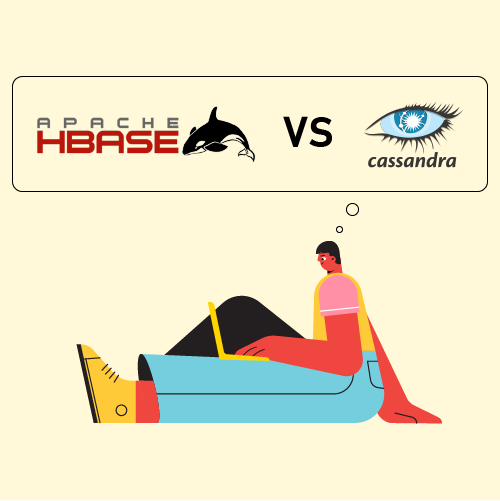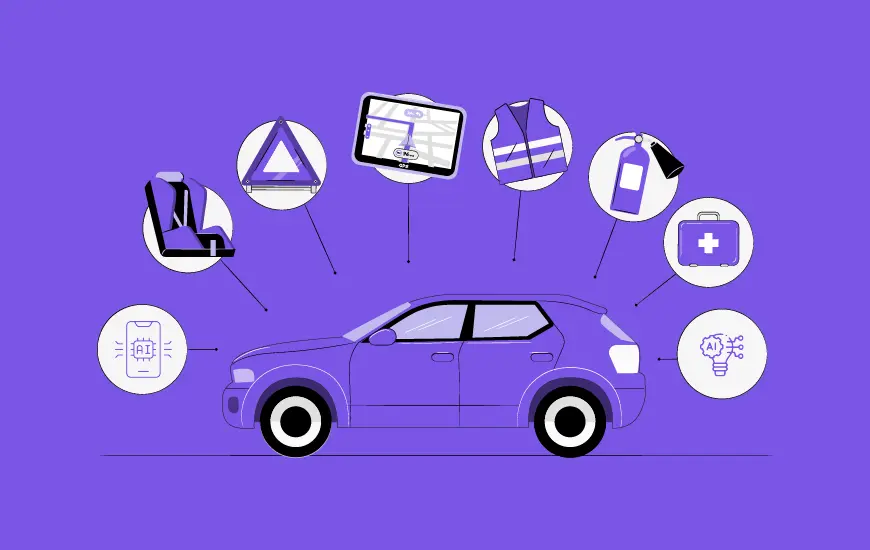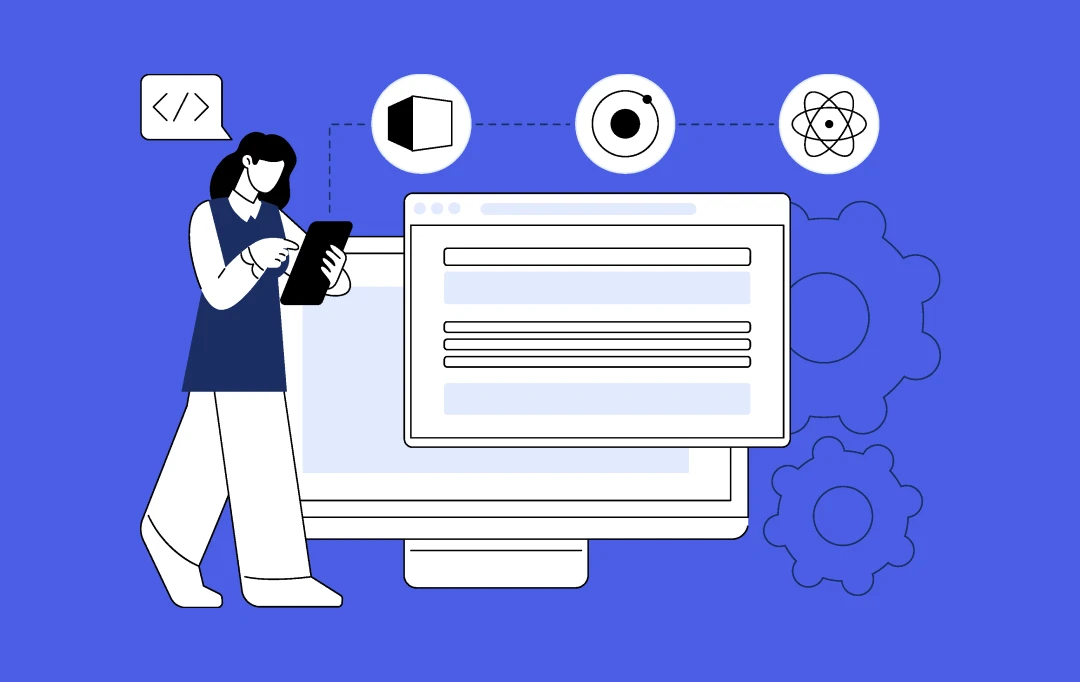- What is Flutter?
- What is React Native?
- The Difference Between Flutter and React Native: A Detailed Picture
- Framework Maturity
- Programming Language
- Installation
- Configuration & Setup
- Technical Architecture
- User Interface
- Native Appearance
- Tooling
- Developers’ Productivity
- Documentation
- Flutter for React Native
- App Performance
- Lifecycle Management
- Code Reuse
- Build and Release Automation Help
- Test Support
- CI/CD and DevOps Support
- Community Support
- Popularity
- Industry Adoption
- What’s New in Flutter in ?
- What’s New in React Native ?
- Frequently Asked Questions About Flutter Vs React Native Debate
React Native by Facebook and Google’s Flutter has been creating a massive buzz lately while being placed against each other in the race to decide which framework is THE BEST. In this article, we are going to look into how they stack up against each other in the industry.
There was a time when the mobile app development industry was only restricted to developing an app individually for iOS and Android, but the tables have turned now, 100%.
Today, investing in a mobile app development company that excels in developing a single app that would work on both Android and iPhone, on one codebase, has become the trendy business agenda.
Every guide to Cross platform app development enlists that ‘The Trend’ became mainstream when Facebook launched and popularized its cross platform app development framework called React Native back in 2015.
Ever since then, businesses – to avail the cost and development benefits that React Native apps development had to offer – had been moving to the framework after getting a staring-at-profit answer to the question ‘Is React Native the Right Platform for Your Next App?’. Thus strengthening the React Native vs Native debate even further.
And thus, without an ounce of doubt, React Native got popular and the top shots like LinkedIn, Instagram, Walmart, etc moved to the platform.
A popularity that got a dent, a rather impactful one, in March 2018.
Google in the Mobile World Congress announced the beta release of its own cross platform SDK called Flutter. And, in just a matter of a few months, mobile app development using Flutter has already started shoving React Native for its fair share of the limelight, backed by the power that Google has bestowed upon it in the shape of the features like Support for AndroidX, Game Controller, and More.
Coming back to today now.
The present day situation is that Flutter and React Native have gone into an open war of traction and mass adoption and the search query of either of the frameworks comes back with the result showing – ‘React Native vs Flutter 2019’.
Let us look back at what the two frameworks stand for to set a base for comparison of being the best native solutions to build apps for both iOS and Android.
What is Flutter?
Flutter Engine is one of the leading open-source cross-platform apps development frameworks operative in the industry today. It was developed by Google in 2017.
Let us now look into the pros and cons of Flutter to get a much clearer idea into the framework.
It comes with following advantages to build cross-platform apps:
- A complete development ecosystem
- Highly customizable
- Google makes it very reliable
- Hot Reload functionality
- Open-source and free to use
It also has some disadvantages, like:
- Large application size
- Reliance on native tools and technologies to build apps
The apps made with the help of the framework includes – Alibaba, Hookle, Topline, OfflinePal, Hamilton, etc.
What is React Native?
It is an open-source framework developed by Facebook in 2015 as its own cross-platform app development technology. It allows the developers to use React and JavaScript in addition to native platform abilities required to build mobile apps.
It comes with a series of benefits like:
- Implementation of Native UI components
- Ready-made components
- Gives access to native functionalities
- Hot reload
- Highly reliable
- Platform specific code
- Open source
- React Native for Web functionality
But the cross-platform mobile app development framework comes with some disadvantages too, which includes:
- Non seamless navigation
- Complex UI
The apps made with React Native include: Facebook, Skype, Artsy, Vogue, Bloomberg, and Tesla, etc.
The dissection has been done to such an extent that we were able to draw a comparative infographic to know the best cross platform app development of it.
The Difference Between Flutter and React Native: A Detailed Picture
Framework Maturity
React Native was first released in 2015 while Flutter first Beta release was made in the Mobile World Congress which was held between February 26th and March 1st. So, talking of maturity, Flutter is less mature as compared to React Native. Since it is still in its infancy stage, Flutter application development will take some time before it gets mature.
React Native – 1
Flutter – 0
Programming Language
React Native uses JavaScript for building cross-platform applications. It is mainly used with React in addition to other famous JavaScript frameworks. This makes it extremely easy for web developers to get started with their mobile app journey.
On the other hand, Flutter uses the Dart programming language. The language was introduced by Google in 2011. It uses a number of object oriented concepts which are fairly easy to learn and get started with.
But, seeing how JavaScript is a language that developers start their journey with, the fact that React Native is easy gets it more points.
React Native – 1
Flutter – 0
Installation
React Native framework is installed through Node Package Manager (NPM). For developers having JavaScript knowledge, the process of installation is extremely easy.
Flutter is installed through downloading binary for specific platform from Github. In case of macOS, an additional flutter.zip file has to be downloaded and added as PATH variable.
While both Flutter framework and React Native lacks one-line installation with a native package manager for an OS, Flutter installation calls for one additional step. Because of this, the point goes to React Native.
React Native – 1
Flutter – 0
Configuration & Setup
Flutter’s setup process is much more straightforward as compared to React Native. Flutter comes with the provision of automated checkup of system problems, something which React Native misses to a great extent.
Flutter – 1
React Native – 0
Technical Architecture
React Native architecture relies on the JS runtime environment architecture, known as JavaScript bridge. It uses the Flux architecture from Facebook. Flutter, on the other hand, uses Dart framework which does not necessarily require a bridge for communicating with native modules.
Since Flutter engine comes with a lot of native components in framework itself and doesn’t need a bridge for communicating with native components, the point here goes to Flutter.
Flutter – 0
React Native – 1
User Interface
Both Flutter app development services and their React Native counterparts have a stark difference when it comes to the building blocks that they use for their UI development. While on one hand React Native taps into native Android and iOS components with the help of third party or custom components, Flutter functions with proprietary widgets that are 100% customized.
These widgets are both in Material Design for Google and Cupertino for Apple, making UI one of the possibility factors of whether or not Flutter replace React Native.
React Native – 0
Flutter – 1
Native Appearance
Native look and feel is something that both Flutter and React Native for mobile app development are promoting as their USP. While the performance that is a sign of React Native Development is available for the world to take a peek in and explore, same can’t be said with guarantee for Flutter.
The reason that companies hire Flutter developers is its feature to use device’s core functionalities without any third party component, has what it takes to go far in the journey of developing native look and feel apps for iOS and Android.
React Native – 1
Flutter – 1
Tooling
When it comes to Tooling, Flutter doesn’t match up to React Native, YET. Since Flutter is at least 3 years old, the range of IDEs and tools supporting it are much higher in number.
But then, Flutter framework can definitely boast of its compatibility with Visual Studio Code, IntelliJ idea, and Android Studio. Moreover, the debugger, Dart linter, auto format, code analyzer, and auto format tools of Flutter have received some very favorable reviews.
React Native – 1
Flutter – 0
Developers’ Productivity
For a developer who holds an expertise in JavaScript, React Native is very easy. It comes with a hot reload feature that saves developers’ time to a massive extent. Moreover, the developers are even free to use any IDE or text editor of their choice.
Flutter also comes with a hot reload feature. But , the learning curve is slightly greater when developers have to learn and use the new Flutter concepts. Also Dart, being new, lacks support of many text editors and IDEs, which lowers the developers productivity.
Being more mature, React Native gives more developer support to a Flutter app development company in terms of language features and IDEs. For this, the score goes to React Native.
React Native – 1
Flutter – 0
Documentation
While the chaotic state which React Native documentation is in, is expected from a framework that is heavily open source, but it has a lot to learn from Flutter documentation.
Google is known for its clear, detailed, and well formulated documentation and with Flutter they have continued the expectation.
When you look at the present day comparison of Flutter vs React Native in 2019, you will find that Flutter is lagging behind and it is. But the situation is going to change.
Flutter in a very short span of time has started getting all the right traction from businesses, in fact when you look at their Showcase page, you will find that the apps that have been made using Flutter belong to the complex category, which are being used by multiple people at the same time.
Add to this the libraries that they are continuously adding in their portfolio, along with the on-point documentation, and you will get a framework that is ready to take on the cross-platform world.
In fact, Google itself is not shying away from challenging Facebook on the face.
In case you missed the existence of Flutter in depth documentation for React Native, here’s a summarized version.
Flutter for React Native
Flutter for React Native is Google’s document helping developers apply their present day React Native knowledge in developing Flutter apps.
The document details the the process of creating a new flutter app. This link particularly explains the flutter for react native, that page intended to show that any developer who has already worked on the react native can easily switch on Flutter.
The documentation is a clear invitation for both iOS and Android app developers to deviate from React Native and experience the ease and flexibility of Flutter.
And on the face documentation guiding developers to switch from React Native to Flutter is not the only way Google is trying to pass React Native in the race to mass adoption. The move to add Material Theming and Cupertino widget in the cross-platform SDK ecosystem has added a whole new punch of expressive user interface into apps developed using the Flutter SDK, something that React Native still lacks and relies on other Design Kits for.
Flutter – 1
React Native – 0
App Performance
Talking of the Flutter vs React Native performance comparison, Flutter takes the crown. It is much faster than its React Native Development counterpart. Since, there is no JavaScript bridge for initiating interactions with the device native components, the speed of development and running time gets expedited drastically.
This added to the point that Flutter has set the animation standard at 60fps is a clear sign of its high performance. Lastly, since Flutter is compiled into the native ARM code for both Android and iOS, performance is the one issue that it would never face.
React Native – 0
Flutter – 1
Lifecycle Management
Commonly speaking, React Native tends to do a much better work at simplifying the app lifecycle handling and optimization. Flutter only gives you the scope of working with widget inheritance that only allows for stateless and stateful conditions, minus any tools for explicitly saving the application state.
React Native – 1
Flutter – 0
Code Reuse
React Native enables you to write a code once and ship it anywhere while embracing the platform differences. Meaning, from time to time developers might have to look into what platform they are running on and load different set of components on the basis of the platform.
Flutter’s codebase is a lot more reusable. It allows one to define single UI widget tree and then reuse the defined logic so that not a lot of differentiation has to be done.
For the ease that Flutter offers, the point goes to the framework.
React Native – 0
Flutter – 1
Build and Release Automation Help
One hands-down benefit of Flutter over React Native is its automation help in build and release. The official React Native document does not carry any automated ways to deploy the iOS apps on the App Store. It does provide a manual process though for deployment of app from Xcode. Moreover, React Native relies on third-party libraries for building and releasing automation.
Flutter’s core features comes with a strong command line interface. It allows developers to develop app binary with the help of command line tools.
The fact that Flutter comes with an amazing automation tool and is used for deploying apps from command line brings it ahead of React Native in the race.
Flutter – 1
React Native – 0
Test Support
Being on JavaScript framework, there are only a few unit level testing frameworks available for React Native. That too, there is no official support in React native when you have to integrate. There are some third party looks such as Detox and Appium that can be used for testing the app but they are not supported officially.
Flutter offers a wide set of testing features for testing the apps at unit, integration, and widget level. It even comes with great documentation.
The extent of testing support clearly highlights the advantage of Flutter over React Native.
React Native – 0
Flutter – 1
CI/CD and DevOps Support
React Native does not carry any official documentation on CI and CD. Flutter, on the other hand, has an entire section on it which includes several links making addition of CI/CD for Flutter apps an extremely easy process.
Flutter – 1
React Native – 0
Community Support
React Native, being launched in 2015 has gathered massive popularity over time. It comes backed with a massive community that holds several conferences and meetings across the globe. Flutter, although is getting a lot of attention from the developer community still has time to reach the massive community backup like in case of react native app development companies.
Because there is still considerably less resources for developers in the Flutter community, the point is a clear evidence of the advantage for React Native over Flutter.
React Native – 1
Flutter – 0
Popularity
Between React Native and Flutter, the number of React Native developers and even the number of apps running on it is way more than in case of Flutter. But, the gap is quickly filling in. According to Stack Overflow’s Developer Survey 2019, Flutter was ranked the most loved language with over 75.4% people showing interest in the framework, while 62.5% developers showed interest in React Native.
Seeing how both the frameworks are gaining traction, it is difficult to comment who is better in both.
React Native – 1
Flutter – 1
Industry Adoption
Since Flutter is considerably new in the cross platform industry, the number of businesses that have adopted the SDK for developing their cross platform apps are very less. While on the other hand, the benefits of using react native for app development lies in the showcase page of apps that have been developed using the framework is much higher.
However, the fact remains that even after being new, brands with their partnered Flutter application building company, have launched apps on the SDK which are rather complex like Google AdWords or Hamilton Musical, and even an eCommerce giant like Alibaba.
React Native – 1
Flutter – 0
Fueling this Flutter vs React Native 2019 fire further is the new additions that have been introduced both the top cross-platform tools.
Between 2018 and now, especially after 2019’s Google IO event announcements, a number of new changes have been brought into both the domains which have now paved the road to great competition.
Let us look at what is new in Flutter and React Native in 2019.
What’s New in Flutter in ?
Ever since the First beta release of Flutter, the framework has been growing in terms of performance capabilities and adoption rates.
Flutter launched its 1.7 release in July 2019 with ample of new features and improvements, including:-
Android X Support – This makes it possible for Flutter app developers to update their designed Android apps without compromising on backward compatibility feature.
OpenType Rich Typography Features – Flutter is releasing a new set of typography features like tabular and old-style numbers, slashed zeros, stylistic sets, etc, which will enhance app UI experience.
Besides, Flutter for Web has also been made available with a focus upon moving Flutter beyond smartphones and enter Chromebooks, Windows, and Mac. It makes developing desktop apps with Flutter a reality. This, as a whole, gives an impression that Flutter has a higher future scope and should be considered by Android and iOS developers in 2019.
2019 ended with Flutter launching its 1.12 version. In the Flutter Interact event, the version was announced with several new features and improvements with a central focus on Ambient Computing.
Apart from this, they worked on several other improvements like:
- Dart 2.7
- Revised DartPad
- Beta Web support
- macOS desktop support
- Add-to-App update
- New Google Fonts package
- iOS 13 dark mode support
What’s New in React Native ?
Last year in November, React Native laid down a roadmap for what was left for 2018 and 2019 as well, making the whole event of building mobile apps in React Native a lot more exciting.
The elements that were added in the list are something that is all set to redefine what React Native stands for.
They have planned to:
- Make APIs stable
- Create a Better GitHub Repository
- Better Documentation
- React Native’s surface area is being removed by unused and non-core components
- Plan to improve support for tools and platforms which are famous in the open source community.
- Facebook will be consuming React Native via Public API to reduce instances of breaking changes.
Apart from these, React Native 0.60 was launched in July 2019 with own set of new changes like:-
New Screen – A new screen is introduced that shows relevant instructions like editing App.js, document links, process to debug menu, and more. This is been considered as an effort by the community to enhance the user-friendliness and popularity of React Native over Flutter.
Support for Android X- Alike Flutter, React Native will also support AndroidX (Android Extension Library). This implies that regardless of whether you pick React Native or Flutter, AndroidX will be a part of your mobile app development process.
On September 2019, React Native launched its 0.61 version with a brand new reloading experience, called Fast Refresh.
In this version, the live reloading and hot reloading features have been merged into a single feature known as Fast Refresh.
Here are the principles that define the React Native 0.61 feature:
- It completely supports modern React
- It recovers after typos and falls back to full reload when necessary.
- It does not perform any invasive code transformation.
In addition to Fast Refresh, they have also made other significant improvements like:
- Fixes the use_frameworks! CocoaPods support
- Added useWindowDimensions Hook
- React has been upgraded to 16.9
With these changes now being introduced or being prepared to be added in both Flutter and React Native ecosystem, the war is only going to get denser now.
To conclude, Flutter will take time to surpass the popularity that React Native has gathered over time. And it will take time to declare that Flutter is the future of mobile app development but give it time and it will jump right on and off the React Native’s user base.
Frequently Asked Questions About Flutter Vs React Native Debate
Q. Between flutter and react native, which one to choose in 2020?
It is tough to say since both the frameworks are doing really well. So, I would recommend taking decision based on the comparison factor shared in this article.
Q. Will flutter replace react native?
Yes, Flutter will replace React Native and become the ruler of Cross-platform development in the future.
Q. How popular is flutter?
Though new in the market, Flutter has earned significant popularity in the market. Various popular brands like Reinvently, Hamiliton, Topline, and Google Ads have embraced the UI framework.
Q. Is react native still in beta?
No, it is not.
Q. Why flutter is better than react native?
Flutter, backed by Google, delivers more of native experience than React Native and does not rely much on third party libraries for introducing new functionalities. This gives Flutter an upper hand over React Native


- In just 2 mins you will get a response
- Your idea is 100% protected by our Non Disclosure Agreement.

Which Mobile Platform Should Startups Choose in 2021: Android Or iOS?
Back in 2008, the iOS App Store was launched with 500 apps. Today that number has skyrocketed to 1.85 million apps that are available for users to download. Android users have a bigger app universe to browse from that consists of over 2.56 million apps available in the Google Play Store. It is safe to…

Kotlin vs Scala: Choose Right JVM Language for App Developers
“The folly of one man is the fortune of another” As quoted by Francis Bacon, meaning, ‘One man’s misery or misfortune is the fortune of another.’ This saying has become true for the JVM world. With the fall of Java – the programming language that entered the market in 1995 and changed the complete story,…

HBase vs Cassandra: Which is Better of the Two NoSQL Databases?
Selecting the best database management system is the key to ensure effective, streamlined app development process and a successful end outcome. However, choosing an ideal system for a project is not very easy for there are always a number of details to be considered at every turn. Especially when it impacts the performance of your…


































